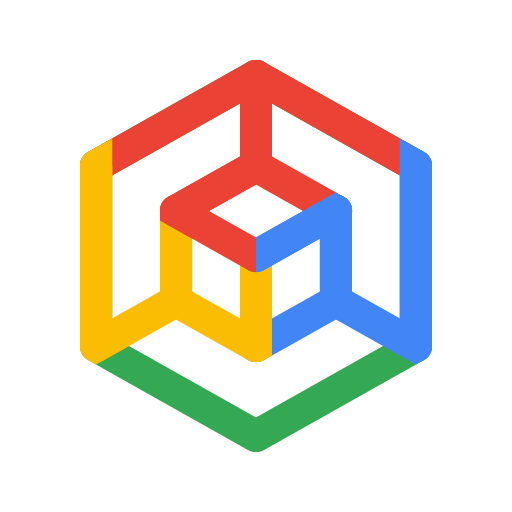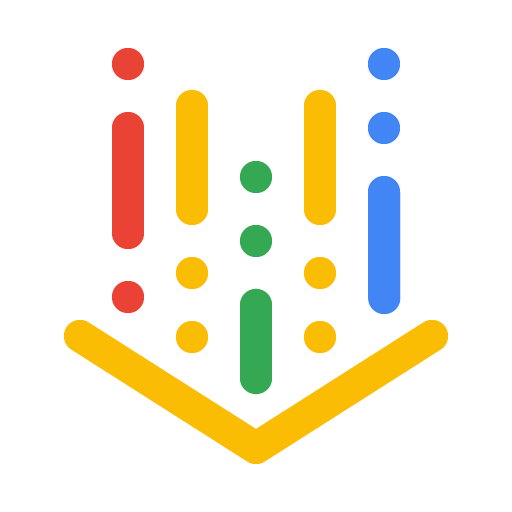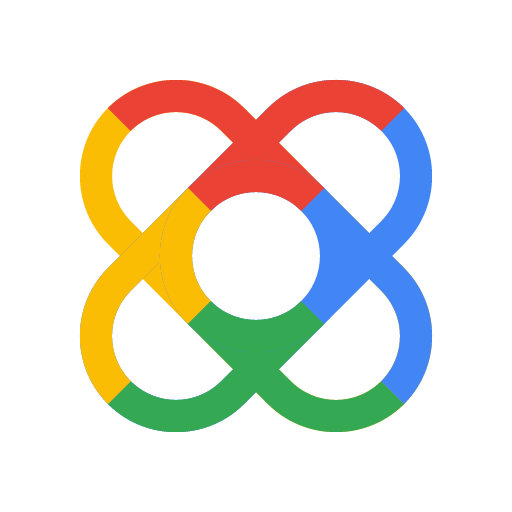Google Cloud is a Leader in the 2023 Forrester Wave: Streaming Data Platforms. Learn more.
Dataflow
Unified stream and batch data processing that's serverless, fast, and cost-effective.
New customers get $300 in free credits to spend on Dataflow.
Real-time insights and activation with data streaming and machine learning
Fully managed data processing service
Automated provisioning and management of processing resources
Horizontal and vertical autoscaling of worker resources to maximize resource utilization
OSS community-driven innovation with Apache Beam SDK
Benefits
Streaming data analytics with speed
Streaming data analytics with speed
Dataflow enables fast, simplified streaming data pipeline development with lower data latency.
Simplify operations and management
Simplify operations and management
Allow teams to focus on programming instead of managing server clusters as Dataflow’s serverless approach removes operational overhead from data engineering workloads.
Reduce total cost of ownership
Reduce total cost of ownership
Resource autoscaling paired with cost-optimized batch processing capabilities means Dataflow offers virtually limitless capacity to manage your seasonal and spiky workloads without overspending.
Key features
Key features
Ready-to-use real-time AI
Enabled through out-of-the box ML features including NVIDIA GPU and ready-to-use patterns, Dataflow’s real-time AI capabilities allow for real-time reactions with near-human intelligence to large torrents of events.
Customers can build intelligent solutions ranging from predictive analytics and anomaly detection to real-time personalization and other advanced analytics use cases.
Train, deploy, and manage complete machine learning (ML) pipelines, including local and remote inference with batch and streaming pipelines.
Autoscaling of resources and dynamic work rebalancing
Minimize pipeline latency, maximize resource utilization, and reduce processing cost per data record with data-aware resource autoscaling. Data inputs are partitioned automatically and constantly rebalanced to even out worker resource utilization and reduce the effect of “hot keys” on pipeline performance.
Monitoring and observability
Observe the data at each step of a Dataflow pipeline. Diagnose problems and troubleshoot effectively with samples of actual data. Compare different runs of the job to identify problems easily.
Customers
Learn from customers using Dataflow
Documentation
Documentation
Serverless Data Processing with Dataflow: Foundations
Foundation training on everything you need to know about Dataflow.
Dataflow quickstart using Python
Set up your Google Cloud project and Python development environment, get the Apache Beam Python SDK and run and modify the WordCount example on the Dataflow service.
Using Dataflow SQL
Create a SQL query and deploy a Dataflow job to run your query from the Dataflow SQL UI.
Installing the Apache Beam SDK
Install the Apache Beam SDK so that you can run your pipelines on the Dataflow service.
Machine learning with Apache Beam and TensorFlow
Preprocess, train, and make predictions on a molecular energy machine learning model, using Apache Beam, Dataflow, and TensorFlow.
Dataflow word count tutorial using Java
In this tutorial, you'll learn the basics of the Cloud Dataflow service by running a simple example pipeline using the Apache Beam Java SDK.
Hands-on labs: Processing Data with Google Cloud Dataflow
Learn how to process a real-time, text-based dataset using Python and Dataflow, then store it in BigQuery.
Hands-on labs: Stream Processing with Pub/Sub and Dataflow
Learn how to use Dataflow to read messages published to a Pub/Sub topic, window the messages by timestamp, and write the messages to Cloud Storage.
Dataflow resources
Find information on pricing, resource quotas, FAQs, and more.
Not seeing what you’re looking for?
Use cases
Use cases
Stream analytics
Google’s stream analytics makes data more organized, useful, and accessible from the instant it’s generated. Built on Dataflow along with Pub/Sub and BigQuery, our streaming solution provisions the resources you need to ingest, process, and analyze fluctuating volumes of real-time data for real-time business insights. This abstracted provisioning reduces complexity and makes stream analytics accessible to both data analysts and data engineers.
Real-time AI
Dataflow brings streaming events to Google Cloud’s Vertex AI and TensorFlow Extended (TFX) to enable predictive analytics, fraud detection, real-time personalization, and other advanced analytics use cases. TFX uses Dataflow and Apache Beam as the distributed data processing engine to enable several aspects of the ML life cycle, all supported with CI/CD for ML through Kubeflow pipelines.
Sensor and log data processing
Unlock business insights from your global device network with an intelligent IoT platform.
All features
All features
| Dataflow ML | Deploy and manage machine learning (ML) pipelines with ease. Use ML models to do local and remote inference with batch and streaming pipelines. Use data processing tools to prepare your data for model training and to process the results of the models. |
| Dataflow GPU | Data processing system optimized for performance and cost of your GPU usage. Support for a wide range of NVIDIA GPUs. |
| Vertical autoscaling | Dynamically adjusts the compute capacity allocated to each worker based on utilization. Vertical autoscaling works hand in hand with horizontal autoscaling to seamlessly scale workers to best fit the needs of the pipeline. |
| Horizontal autoscaling | Horizontal autoscaling lets the Dataflow service automatically choose the appropriate number of worker instances required to run your job. The Dataflow service may also dynamically reallocate more workers or fewer workers during runtime to account for the characteristics of your job. |
| Right fitting | Right fitting creates stage-specific pools of resources that are optimized for each stage to reduce resource wastage. |
| Smart diagnostics | A suite of features including 1) SLO-based data pipeline management, 2) Job visualization capabilities that provide users a visual way to inspect their job graph and identify bottlenecks, 3) Automatic recommendations to identify and tune performance and availability problems. |
| Streaming Engine | Streaming Engine separates compute from state storage and moves parts of pipeline execution out of the worker VMs and into the Dataflow service back end, significantly improving autoscaling and data latency. |
| Dataflow Shuffle | Service-based Dataflow Shuffle moves the shuffle operation, used for grouping and joining data, out of the worker VMs and into the Dataflow service back end for batch pipelines. Batch pipelines scale seamlessly, without any tuning required, into hundreds of terabytes. |
| Dataflow SQL | Dataflow SQL lets you use your SQL skills to develop streaming Dataflow pipelines right from the BigQuery web UI. You can join streaming data from Pub/Sub with files in Cloud Storage or tables in BigQuery, write results into BigQuery, and build real-time dashboards using Google Sheets or other BI tools. |
| Flexible Resource Scheduling (FlexRS) | Dataflow FlexRS reduces batch processing costs by using advanced scheduling techniques, the Dataflow Shuffle service, and a combination of preemptible virtual machine (VM) instances and regular VMs. |
| Dataflow templates | Dataflow templates allow you to easily share your pipelines with team members and across your organization or take advantage of many Google-provided templates to implement simple but useful data processing tasks. This includes Change Data Capture templates for streaming analytics use cases. With Flex Templates, you can create a template out of any Dataflow pipeline. |
| Notebooks integration | Iteratively build pipelines from the ground up with Vertex AI Notebooks and deploy with the Dataflow runner. Author Apache Beam pipelines step by step by inspecting pipeline graphs in a read-eval-print-loop (REPL) workflow. Available through Google’s Vertex AI, Notebooks allows you to write pipelines in an intuitive environment with the latest data science and machine learning frameworks. |
| Real-time change data capture | Synchronize or replicate data reliably and with minimal latency across heterogeneous data sources to power streaming analytics. Extensible Dataflow templates integrate with Datastream to replicate data from Cloud Storage into BigQuery, PostgreSQL, or Spanner. Apache Beam’s Debezium connector gives an open source option to ingest data changes from MySQL, PostgreSQL, SQL Server, and Db2. |
| Inline monitoring | Dataflow inline monitoring lets you directly access job metrics to help with troubleshooting batch and streaming pipelines. You can access monitoring charts at both the step and worker level visibility and set alerts for conditions such as stale data and high system latency. |
| Customer-managed encryption keys | You can create a batch or streaming pipeline that is protected with a customer-managed encryption key (CMEK) or access CMEK-protected data in sources and sinks. |
| Dataflow VPC Service Controls | Dataflow’s integration with VPC Service Controls provides additional security for your data processing environment by improving your ability to mitigate the risk of data exfiltration. |
| Private IPs | Turning off public IPs allows you to better secure your data processing infrastructure. By not using public IP addresses for your Dataflow workers, you also lower the number of public IP addresses you consume against your Google Cloud project quota. |
Pricing
Pricing
Dataflow jobs are billed per second, based on the actual use of Dataflow batch or streaming workers. Additional resources, such as Cloud Storage or Pub/Sub, are each billed per that service’s pricing.
Partners
Explore partner solutions
Google Cloud partners have developed integrations with Dataflow to quickly and easily enable powerful data processing tasks of any size.
Cloud AI products comply with our SLA policies. They may offer different latency or availability guarantees from other Google Cloud services.
Take the next step
Start building on Google Cloud with $300 in free credits and 20+ always free products.
Need help getting started?
Contact salesWork with a trusted partner
Find a partnerContinue browsing
See all products






















